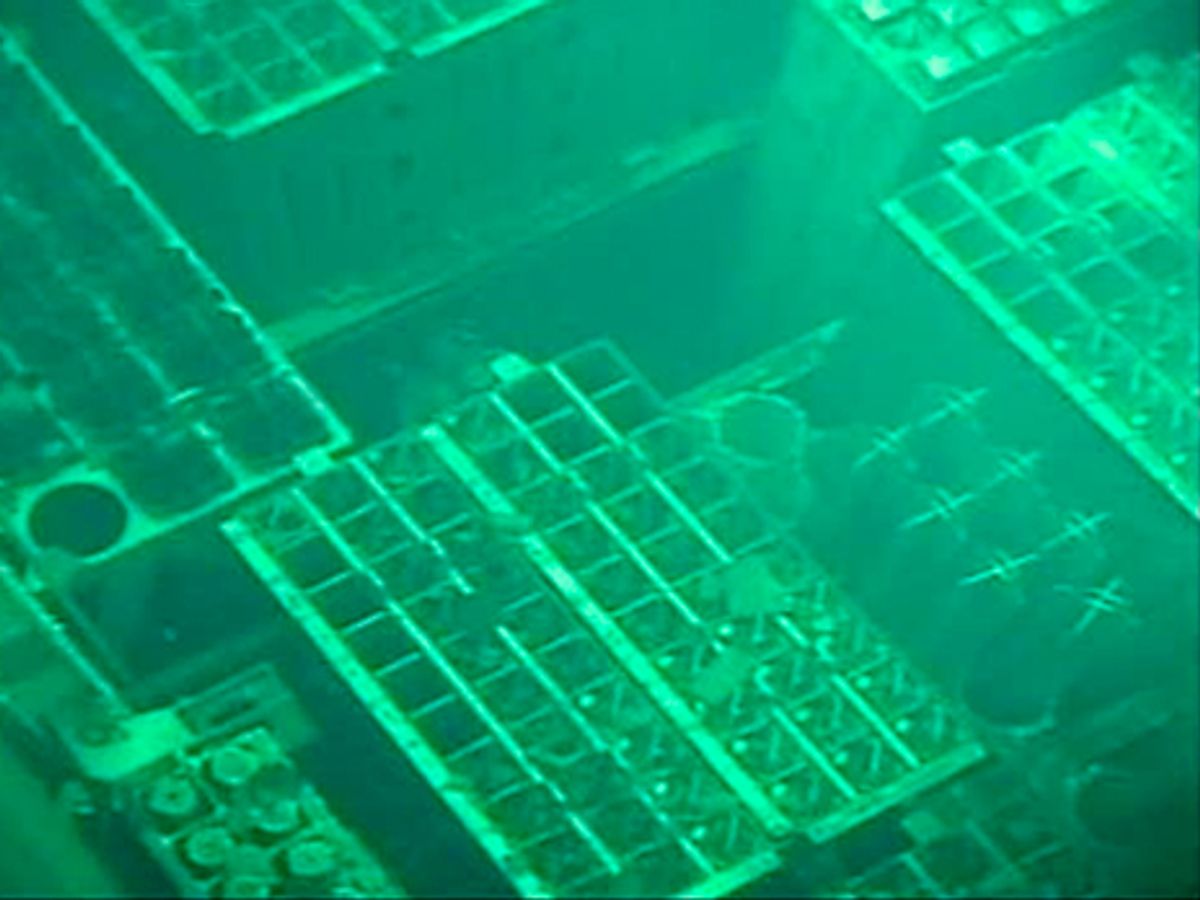Fuel Pool: Fuel rods in the reactor No. 4 spent fuel pool are seen in a still taken from a video and released by TEPCO.
Editor's Note: This is part of IEEE Spectrum's ongoing coverage of Japan's earthquake and nuclear emergency. For more details on how Fukushima Dai-1's nuclear reactors work and what has gone wrong so far, see our explainer.
Workers are planning to enter the damaged No. 1 reactor building of the Fukushima Dai-1 Nuclear Power Plant this week to install filtering equipment for removing radioactive contamination from the air. Tokyo Electric Power Co. (TEPCO) said on Monday that preparations were underway for workers to place four devices in the building with the goal of reducing the radiation to a level low enough to create a “working environment inside the reactor building.” This is a necessary preliminary step before the company can begin to put in place a stable circulating cooling system for the reactor, whose original cooling system (along with those of the No. 2 and 3 reactors) was damaged by the tsunami that followed the 11 March earthquake.
A first step in restoring a cooling system is finding a way to better calibrate the water levels in the reactor, so TEPCO intends to install a new water-level gauge. The company has been injecting water into the pressure vessel via the “Low Pressure Injection Line” on a trial basis. The water injection is part of urgent efforts to fill the vessel above the fuel rods and so cool the reactor. But pressure inside the reactor vessel began falling after the procedure began, creating the potential for outside air to enter the vessel and lead to an explosion. TEPCO had set a goal of injecting up to 14 tons of water per hour, but reduced this to 10 tons and now has cut back the figure to six tons, in order to maintain an adequate internal pressure.
Figuring out the water level in the reactor will necessitate a work team entering the building, but first it must be cleared of most of the radioactive air. To achieve this, a team will install four ambient air filtration systems in a passageway near the double doors or airlock of the reactor building. Each device, supplied by The Japan Environment Research Company, will be powered by temporary diesel generators and clean the circulating air via at a rate of 1680 cubic meters per hour. The company said that the workers installing the equipment will be limited to being in the building for ten minutes at a time, because of the high radiation levels.
A TEPCO official explained during a press briefing that they planned “to reduce the density of air contamination in the building by about 95 percent.” The workers could start installing the devices this Thursday.
TEPCO is also continuing to pump nitrogen gas into the No. 1 reactor’s containment vessel to prevent the possibility of a hydrogen explosion, like the one that occurred at struck the reactor on 12 March.
Over at Reactor No. 2, workers continue to remove the highly radiated water that has pooled in the basement of the reactor’s turbine building and in trenches outside the building. “We have already transferred more than 2500 tons of water to the radiated waste disposal facility, said Hidehiko Nishiyama, the deputy director-general of the Nuclear and Industrial Safety Agency, in a press briefing on May 2.”
Nishiyama added that TEPCO will also have to inject nitrogen into the No. 2 reactor but faced the challenge of dealing with a suspected hole in the suppression pool or torus. “One idea is to fill the torus room where the suppression pool is located with sticky concrete,” said Nishiyama. “But there are some difficulties such as how to introduce the concrete from outside the building.”
A TEPCO official told IEEE Spectrum that the company also plans to construct a temporary wall or dyke to protect the No. 3 and 4 reactors, which are considered the most vulnerable to another tsunami, should one occur following one of the many major aftershocks that have been taking place frequently since the original quake. The official said the wall would stretch for about 500 meters and be between 1 and 2 meters high but built on ground some 10 meters above sea level. He added that the design was still under consideration.
Separately, Banri Kaieda, head of the Ministry of Economy, Trade and Industry, hinted at a plan to have all of Japan’s power companies with nuclear plants help pay compensation to those hurt by the Fukushima incident. Kaieda revealed this idea during an interview with the Yomiuri Shimbun, Japan’s largest newspaper. He said he didn’t want to see electricity rates hiked to do this, but rather urged the companies to sell assets and cut expenses.
“Domestic power companies have relied on their monopolization of regional energy supplies, profiting from their agreement not to interfere with each other,” Banri is quoted as saying. “Considering their mutual dependence on each other, I want them to share TEPCO’s burden of compensation.”




